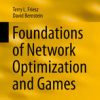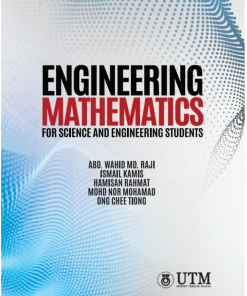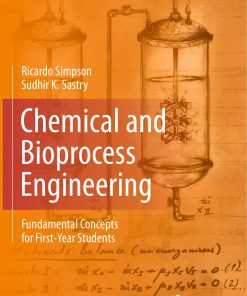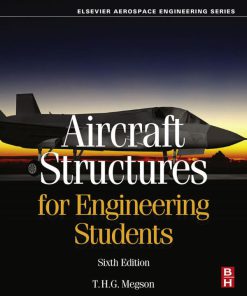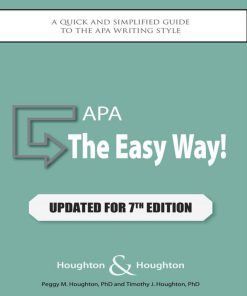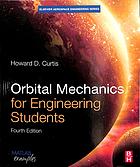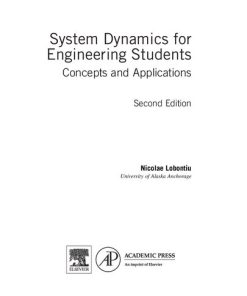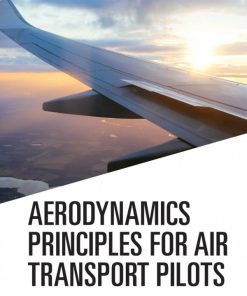Aerodynamics for Engineering Students 7th Edition by Houghton, Carpenter, Steven Collicott, Daniel Valentine 0081001943 9780081001943
$50.00 Original price was: $50.00.$25.00Current price is: $25.00.
Aerodynamics for Engineering Students 7th Edition by E.L. Houghton, P.W. Carpenter, Steven H. Collicott, Daniel T. Valentine – Ebook PDF Instant Download/DeliveryISBN: 0081001943, 9780081001943
Full download Aerodynamics for Engineering Students 7th Edition after payment.
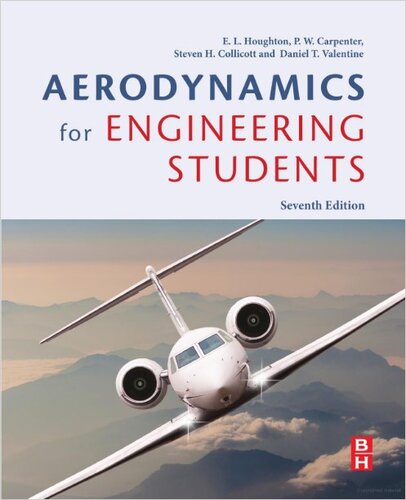
Product details:
ISBN-10 : 0081001943
ISBN-13 : 9780081001943
Author: E.L. Houghton, P.W. Carpenter, Steven H. Collicott, Daniel T. Valentine
Aerodynamics for Engineering Students, Seventh Edition, is one of the world’s leading course texts on aerodynamics. It provides concise explanations of basic concepts, combined with an excellent introduction to aerodynamic theory. This updated edition has been revised with improved pedagogy and reorganized content to facilitate student learning, and includes new or expanded coverage in several important areas, such as hypersonic flow, UAV’s, and computational fluid dynamics.
Aerodynamics for Engineering Students 7th Table of contents:
Chapter 1: Basic Concepts and Definitions
Abstract
1.1. Introduction
1.2. Units and Dimensions
1.3. Relevant Properties
1.4. Aeronautical Definitions
1.5. Dimensional Analysis
1.6. Basic Aerodynamics
1.7. Basic Flight Stability
1.8. Control-Volume Analysis
1.9. Hydrostatics
1.10. Exercises
Chapter 2: Equations of Motion
Abstract
2.1. Introduction
2.2. One-Dimensional Flow: The Basic Equations
2.3. Viscous Boundary Layers
2.4. Measurement of Air Speed
2.5. Two-Dimensional Flow
2.6. Stream Function and Streamline
2.7. Momentum Equation
2.8. Rates of Strain, Rotational Flow, and Vorticity
2.9. Navier-Stokes Equations
2.10. Properties of the Navier-Stokes Equations
2.11. Exact Solutions of the Navier-Stokes Equations
2.12. Exercises
Bibliography
Chapter 3: Viscous Flow and Boundary Layers
Abstract
3.1. Introduction
3.2. Boundary-Layer Theory
3.3. Boundary-Layer Separation
3.4. Flow Past Cylinders and Spheres
3.5. The Momentum-Integral Equation
3.6. Approximate Methods for a Boundary Layer on a Flat Plate with Zero Pressure Gradient
3.7. Additional Examples of the Momentum-Integral Equation
3.8. Laminar-Turbulent Transition
3.9. The Physics of Turbulent Boundary Layers
3.10. Estimation of Profile Drag from the Velocity Profile in a Wake
3.11. Some Boundary-Layer Effects in Supersonic Flow
3.12. Exercises
Bibliography
Chapter 4: Compressible Flow
Abstract
4.1. Introduction
4.2. Isentropic One-Dimensional Flow
4.3. One-Dimensional Flow: Weak Waves
4.4. One-Dimensional Flow: Plane Normal Shock Waves
4.5. Mach Waves and Shock Waves in Two-Dimensional Flow
4.6. Exercises
4.7. Matlab Functions for Compressible Flow
Bibliography
Chapter 5: Potential Flow
Abstract
5.1. Introduction
5.2. Laplace’s Equation
5.3. Standard Flows in Terms of ψ and ϕ
5.4. Axisymmetric Flows (Inviscid and Incompressible Flows)
5.5. Computational (Panel) Methods
5.6. A Computational Routine in Fortran 77
5.7. Exercises
Bibliography
Chapter 6: Thin Airfoil Theory
Abstract
6.1. Introduction
6.2. The Development of Airfoil Theory
6.3. General Thin-Airfoil Theory
6.4. Solution to the General Equation
6.5. The Flapped Airfoil
6.6. The Jet Flap
6.7. Normal Force and Pitching Moment Derivatives Due to Pitching
6.8. Particular Camber Lines
6.9. The Thickness Problem for Thin-Airfoil Theory
6.10. Computational (Panel) Methods for Two-Dimensional Lifting Flows
6.11. Exercises
Bibliography
Chapter 7: Wing Theory
Abstract
7.1. The Vortex System
7.2. Laws of Vortex Motion
7.3. The Wing as a Simplified Horseshoe Vortex
7.4. Vortex Sheets
7.5. Relationship between Spanwise Loading and Trailing Vorticity
7.6. Determination of Load Distribution on a Given Wing
7.7. Swept and Delta Wings
7.8. Computational (Panel) Methods for Wings
7.9. Exercises
Bibliography
Chapter 8: Airfoils and Wings in Compressible Flow
Abstract
8.1. Wings in Compressible Flow
8.2. Exercises
Bibliography
Chapter 9: Computational Fluid Dynamics
Abstract
9.1. Computational Methods
Bibliography
Chapter 10: Flow Control and Wing Design
Abstract
10.1. Introduction
10.2. Maximizing Lift for Single-Element Airfoils
10.3. Multi-Element Airfoils
10.4. Boundary Layer Control Prevention to Separation
10.5. Reduction of Skin-Friction Drag
10.6. Reduction of Form Drag
10.7. Reduction of Induced Drag
10.8. Reduction of Wave Drag
People also search for Aerodynamics for Engineering Students 7th:
aerodynamics for engineering students 6th edition pdf
aerodynamics for engineering students 8th edition
aerodynamics for engineering students 7th edition
aerodynamics for engineering students el houghton
aerodynamics for engineering students solution
Tags: Aerodynamics, Engineering Students, Houghton, Carpenter, Steven Collicott, Daniel Valentine
You may also like…
Mathematics - Others
Reference - Other Reference By Subject
APA The Easy Way Updated for the APA 7th Edition Timothy J Houghton Peggy M Houghton
Relationships & Lifestyle - Alternative Medicine & Natural Healing
Engineering - Aerospace Engineering
Orbital Mechanics for Engineering Students 4th Edition by Howard Curtis 008102133X 9780081021330
Engineering
System Dynamics for Engineering Students: Concepts and Applications 2nd Edition Nicolae Lobontiu
Technique - Transportation: Aviation
Aerodynamics Principles for Air Transport Pilots 1st Edition Rose G. Davies



